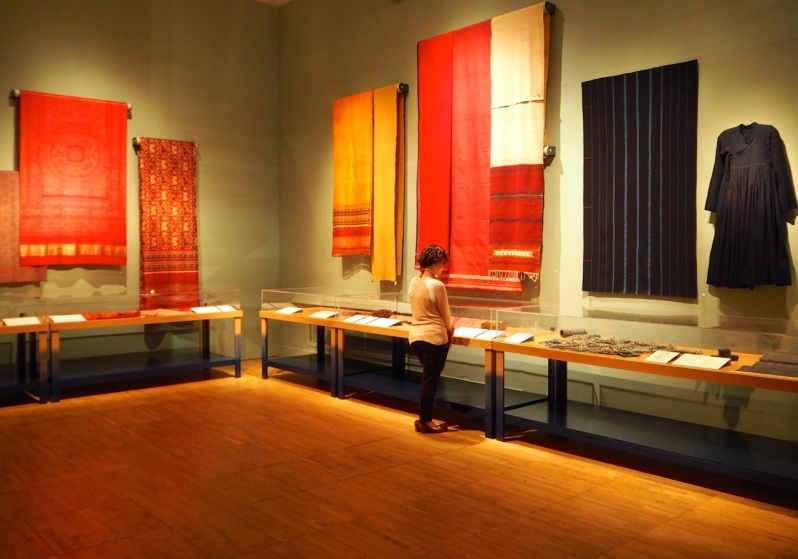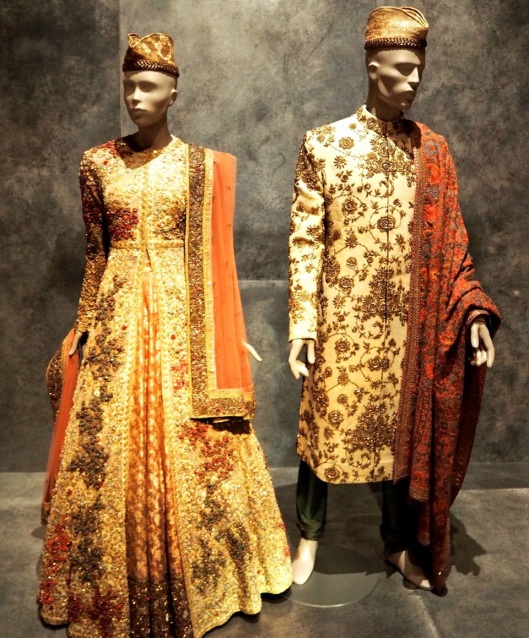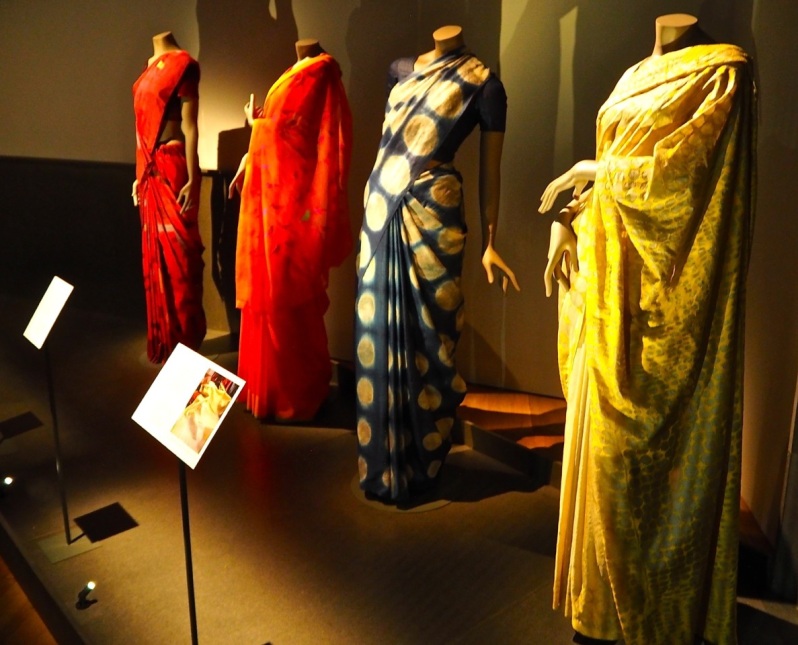
The Fabric of India
at Victoria & Albert Museum
Open Now
until 10th January 2016
Last Chance to See!
India’s handmade textile traditions are the focus for the V&A’s The Fabric of India exhibition. As part of their India Festival, the V&A has mounted a show that looks at fabrics from the very earliest-surviving textile fragments to the most recent examples of contemporary high fashion on the subcontinent. And it is an absolute stunner of a show.
The Fabric of India looks not only at the history of textile production and trade but also at the political and economic importance of textiles in India. There is everything fabric-related in this exhibition from indigo dyeing to crewelwork, from opulent textiles for Mughal rulers to the simple homespun Khadi of Mahatma Gandhi, from block printing to gold embroidery. All take a part in telling this truly fascinating tale of India’s relationship with fabric over the centuries and onwards right up to the present day.

Amongst the most astonishing of the exhibits in The Fabric of India is Tipu’s Tent (1725-50). This huge tent that has area that exceeds 58 square metres, was originally used by the infamous 18th century ruler of the Kingdom of Mysore, Tipu Sultan. Richly decorated in a still brilliantly coloured chintz of flowers and foliage, the tent with its palatial size instantly conveys the magnificence and luxury of the Mughal courts. Other extraordinary highlights of the show include a 16th century talismanic shirt inscribed with verses from the Quran designed to protect the wearer in battle and a set of Indian dyed bed hangings that belonged to Austrian Prince Eugene in the 17th century.

There are many amazing survivals amongst the exhibits and great stories about how the V&A came to acquire some of the artefacts in the show. A vast wall hanging from Gujarat, richly decorated with an appliquéd parade of people and elephants, was found abandoned on the streets of New York in the 1990s and subsequently offered as a gift to the V&A – after extensive conservation from the team at the museum all 17 metres of it is on show in The Fabric of India for the very first time. Another acquisition story concerns a heavily embroidered man’s riding jacket from the 1620s. Covered with intricately sewn hunting scenes this is one of the finest examples of 17th century Mughal dress in existence. With charming self-deprecation, the V&A tells a story against itself regarding this artefact. The museum, not originally identifying its huge rarity and importance, repeatedly rejected the hunting jacket when it was offered for sale in the 1920s by a Mrs Beryl Blake, rather witheringly explaining the coat was “hardly the kind of thing we should care to recommend for purchase.” It took 20 more years and the fresh eyes of a new Keeper of the V&A’s India Department to recognise how precious and unique this Mughal hunting jacket is. It was finally purchased for the collection in 1947 and has been highly treasured ever since.

The strongest part of The Fabric of India has to be the contemporary section that brings the show to a close. In a section that holds so many of the highlights of the exhibition, a special mention has to be given to the coordinating wedding ensemble for a bride and groom by Sabyasachi Mukherjee from 2015. It is a spectacular example of the enduring cultural importance of hand-crafted textiles in India. Absolutely encrusted with beading, sequins and embroidery, these wedding garments, made from a combination of new and antique fabrics, are highly coveted and have made Sabyasachi Mukherjee one of India’s most sought after designers.

The stand-out display of The Fabric of India sees the sari, that most traditional form of Indian dress, brought beautifully up-to-date. The most heavenly contemporary examples of modern day high-fashion saris are on show here. It is hard to pick a favourite, so you will have to give me two. In a 2010 design for his brand Raw Mango, Sanjay Garg weaves the motif of the Indian crow 108 times (108 being an auspicious number in India) into a deep pink silk and cotton sari, with just a single bird of the 108 picked out in a lime green. And the 2011-12 Pebble Stream sari from designer Swati Kalsi sees the tiniest hand-embroidered yellow stitches embellishing the palest dove grey silk sari. Just exquisite and very, very covetable.
Hats off to the V&A curators, Rosemary Crill and Divia Patel, for wrestling such a vast and unwieldy subject into this elegant, cohesive and beautiful show. If you haven’t seen it yet, don’t miss it. The Fabric of India closes on Sunday 10th January.
Photographs © The London Art File
Admission: £14 (concessions available)
V&A Members go free
Open: Daily 10am – 5.45pm
Friday late until 10pm
Victoria & Albert Museum
Cromwell Road
London SW7 2RL
www.vam.ac.uk/fabricofindia
I’m letting my niece in London know about this.
LikeLiked by 1 person
Very cool. Wish it would travel to the U. S. Thanks for posting!
LikeLiked by 1 person
Looks amazing – wish I had the time to see it!
LikeLiked by 1 person